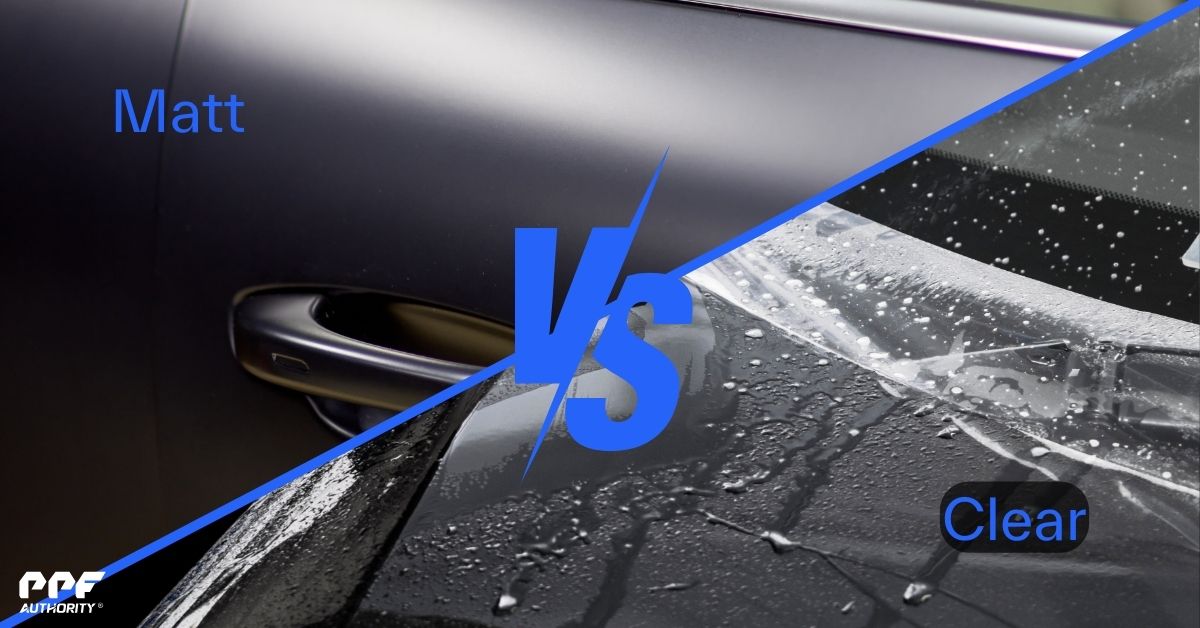Paint Protection Film (PPF) is a popular choice for car owners who want to preserve their vehicle’s paint and protect it from road debris, environmental contaminants, and minor scratches. If you’re considering PPF for your car, this comprehensive FAQ will address your most common questions.
What is Paint Protection Film (PPF)?
Paint Protection Film (PPF) is a thin, transparent polyurethane or polymer film applied to a vehicle’s painted surfaces. It provides a shield against scratches, rock chips, road debris, bug splatter, and environmental hazards.
How Does PPF Work?
PPF creates a durable, invisible barrier between your car’s paint and external elements. Advanced PPF features self-healing properties, meaning minor scratches and swirl marks disappear with exposure to heat, such as sunlight or warm water.
What Areas of the Car Can Be Covered with PPF?
PPF can be applied to specific areas or the entire vehicle based on your needs. Common coverage areas include:
- Full Front: Hood, fenders, front bumper, and side mirrors.
- High-Impact Areas: Rocker panels, door edges, and rear wheel arches.
- Full Vehicle: Maximum protection with PPF applied to the entire car.
Is PPF Visible Once Applied?
Modern PPF is nearly invisible when installed correctly. High-quality films provide a clear, glossy finish that enhances your car’s look. Some films are also available in matte finishes for a custom appearance.
What Are the Benefits of PPF?
PPF offers several key advantages, including:
- Protection Against Damage: Shields paint from rock chips, scratches, and abrasions.
- UV Resistance: Prevents paint fading from prolonged sun exposure.
- Self-Healing Properties: Repairs minor scratches and swirl marks with heat.
- Hydrophobic Coating: Repels water, dirt, and contaminants, making cleaning easier.
- Enhanced Resale Value: Maintains a like-new appearance, increasing resale value.
How Long Does PPF Last?
The lifespan of PPF depends on the quality of the film, installation, and maintenance. Most high-quality PPFs last 5 to 10 years, with some premium options lasting even longer.
Can PPF Be Removed?
Yes, PPF can be safely removed without damaging the paint underneath. It’s best to have removal done professionally to avoid residue or paint damage.
Does PPF Require Special Maintenance?
Maintaining PPF is simple:
- Wash Regularly: Use pH-neutral car soap and a soft microfiber cloth.
- Avoid Harsh Chemicals: Do not use abrasive cleaners or polishes.
- Waxing: Traditional waxes are not recommended, but PPF-specific sealants can be used for extra protection.
Can PPF Be Applied Over a Ceramic Coating?
No, PPF is applied first, followed by a ceramic coating. This allows PPF to adhere properly and the ceramic coating to enhance gloss and hydrophobic properties.
How Does PPF Compare to Ceramic Coating?
While both PPF and ceramic coatings protect your vehicle, they serve different purposes:
- PPF: Physical protection against rock chips, scratches, and impacts.
- Ceramic Coating: Enhances gloss, repels water, and protects against UV rays and stains.
For comprehensive protection, many car owners combine PPF with ceramic coating.
How Long Does It Take to Install PPF?
The installation time varies:
- Partial Installation: 1–2 days.
- Full Vehicle Installation: 3–5 days.
Proper installation requires precision and curing time for a flawless finish.
Will PPF Damage My Paint?
No, PPF protects rather than damages your paint. When professionally installed and removed, it does not harm the paint underneath.
Can PPF Be Installed on Any Vehicle?
Yes, PPF can be applied to almost any car, truck, motorcycle, or SUV. Custom-cut templates ensure a perfect fit for your make and model.
Does PPF Protect Against All Types of Damage?
PPF is highly durable but has limitations. While it protects against rock chips, scratches, and minor impacts, it may not prevent damage from heavy collisions or deep gouges.
Is PPF Worth the Investment?
For car owners who value their vehicle’s appearance, PPF is absolutely worth it. The cost is often outweighed by the savings on potential paint repairs and increased resale value.
Can I Install PPF Myself?
While DIY kits are available, professional installation is recommended. Incorrect application can lead to bubbles, peeling, or uneven coverage. A professional ensures a flawless finish and maximum performance.
How Much Does PPF Cost?
The cost of PPF varies based on the area covered and film quality:
- Partial Coverage (hood, bumper, mirrors): $500–$1,500.
- Full Front Coverage: $1,500–$3,000.
- Full Vehicle Coverage: $5,000–$10,000+.
Premium films and professional installation cost more upfront but offer better durability and protection.
How Do I Choose the Right PPF Installer?
Look for an installer who:
- Uses high-quality films from trusted brands.
- Offers warranties for the film and installation.
- Has positive reviews and past work examples.
Can PPF Be Repaired?
Minor PPF damage, like scratches, often self-heals. For significant damage, the affected section can be replaced without removing the entire film.
What’s the Difference Between Clear and Matte PPF?
- Clear PPF: Maintains a glossy appearance while protecting the paint.
- Matte PPF: Creates a satin/matte finish for a unique look with the same level of protection.
Conclusion
Paint Protection Film (PPF) is an excellent investment for preserving your vehicle’s paint and keeping it looking brand new. By understanding how PPF works, its benefits, and proper care, you can make an informed decision for your car. For the best results, always choose a high-quality film and work with an experienced professional installer.
